
Introduction
Cable TV has long been a cornerstone of home entertainment, providing families with access to a wide range of channels and content. However, in recent years, streaming services have rapidly gained popularity, leading many to question whether cable TV is still relevant in today’s media landscape. As consumers continue to shift away from traditional cable subscriptions in favor of streaming platforms, cable providers are being forced to adapt. In this article, we will explore how cable TV is responding to the rise of streaming services, the challenges it faces, and what the future may hold for cable TV.
The Rise of Streaming Services
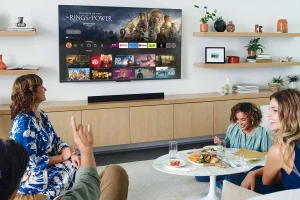
Streaming services like Netflix, Hulu, Amazon Prime Video, and Disney+ have changed the way we watch TV. Unlike traditional cable TV, which offers a set list of channels, streaming lets you watch shows and movies whenever and wherever you want. You can choose what to watch and when to watch it, making streaming services a popular choice for many people.
Another benefit of streaming is that it’s cheaper. Cable TV often requires expensive bundles of channels, but streaming services let you pay only for the content you want. As a result, more people are switching from cable TV to streaming platforms for a more affordable and flexible option.
Cable TV’s Declining Popularity

Cable TV was once the main way people watched entertainment, but it’s becoming less popular. In 2023, millions of people “cut the cord,” dropping their cable subscriptions and choosing streaming services instead. A report from eMarketer predicts that fewer U.S. households will have cable TV in the future, as more people turn to streaming for their entertainment.
There are a few reasons for this shift. First, many people are unhappy with the high cost of cable packages. These packages often include many channels that viewers don’t even watch. This “one-size-fits-all” approach is less attractive when people want more personalized, on-demand content.
Second, streaming services are more convenient. You can watch on devices like smartphones, tablets, laptops, and smart TVs. Plus, streaming platforms let users create multiple profiles, so families can share an account while still getting recommendations based on their own preferences.
How Cable TV Is Adapting to Streaming Services
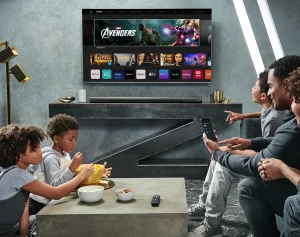
As streaming services become more popular, cable TV providers are making changes to keep up. Many cable companies now offer internet-based streaming services to stay competitive. These services mix the on-demand content of streaming with the live TV channels people are used to.
For example, big cable providers like Xfinity, Comcast, and Spectrum have launched apps that let users watch live TV, on-demand movies, and more over the internet. These apps try to offer the same convenience as streaming services, but with live TV and sports for viewers who still want them.
Cable companies are also offering more flexible subscription options. Instead of forcing customers to pay for large channel bundles, many now let users pick specific channels or genres they want to watch. This makes traditional cable more like streaming services, giving people more control over what they pay for.
The Benefits of Streaming Services Over Cable TV
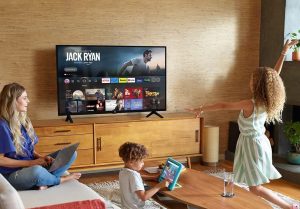
1. Cost Savings
Streaming services are more affordable than cable TV. Cable often comes with high fees, long contracts, and hidden charges. Streaming, however, offers flexible plans with no contracts or extra costs. You only pay for what you want to watch.
2. On-Demand Content
With streaming, you can watch shows and movies whenever you want. You don’t have to wait for a specific time like with cable TV. This gives you more control over your entertainment.
3. Device Flexibility
Streaming services work on many devices like smartphones, tablets, laptops, and smart TVs. This lets you watch content wherever you are—at home, on the go, or while traveling. Cable TV, however, usually only works on traditional TV sets, making it less convenient.
4. Customizable Options
Streaming platforms offer a lot of content, and you can pick what you want to watch. Many services also give personalized recommendations based on what you’ve watched before. Cable TV, on the other hand, offers a set list of channels and programs that may not suit everyone’s tastes.
How Cable TV is Competing with Streaming
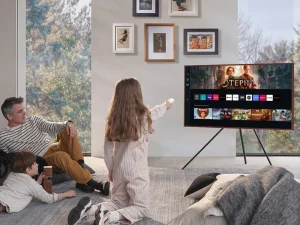
Cable TV companies are finding new ways to compete with streaming services. Many now offer “bundled” packages that include both regular TV channels and access to streaming platforms like Netflix or Hulu. This gives viewers the best of both worlds—watching live sports on cable while streaming their favorite shows anywhere.
Why Some People Still Choose Cable TV

Even though streaming is growing, there are still many reasons why people choose cable. Some viewers prefer cable because it offers a wider range of live programming, especially for sports and news. Cable TV also provides a simple, easy-to-use service that doesn’t require internet access. For older adults who may not be familiar with how streaming works, cable TV can feel more comfortable.
The Challenges Cable TV Faces
Even though cable TV is trying to adapt, it still faces many challenges in the streaming age. One big problem is the fast pace of new technology. As streaming services keep improving, cable TV providers may have a hard time keeping up with the latest trends in user experience and content delivery.
Another challenge is how viewers’ habits have changed. Many people, especially younger ones, are used to the on-demand and flexible nature of streaming. It’s hard for cable TV to win back these viewers, especially since many have already canceled their cable and are unlikely to go back.
Finally, cable TV providers are facing more competition from internet-based content. As more people switch to streaming, the internet has become the main way to watch entertainment. This has pushed cable companies to create their own streaming services, which can be expensive and difficult to manage.
The Future of Cable TV: Can It Co-Exist with Streaming?
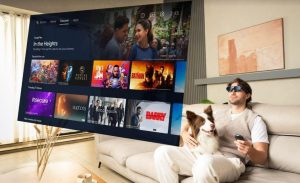
As the entertainment industry continues to evolve, cable TV will likely need to find ways to co-exist with streaming services. While traditional cable TV may never fully disappear, its role in the entertainment ecosystem may continue to shrink. For cable providers to remain competitive, they must continue to innovate and adapt to the changing preferences of consumers.
One potential strategy is to offer hybrid models that combine the best of both cable TV and streaming services. By providing on-demand content alongside live TV programming, cable companies can appeal to consumers who value the flexibility of streaming but still enjoy live events, sports, and news.
Another possibility is the continued expansion of cable providers into the digital space. With the growth of internet-based content and streaming services, cable companies may invest more heavily in their own digital platforms, offering a more integrated entertainment experience that combines traditional cable TV with the convenience of streaming.
Comparative Table: Cable TV vs. Streaming Services
| Feature | Cable TV | Streaming Services |
|---|---|---|
| Cost | Often higher due to bundled channels | Typically lower, with pay-as-you-go options |
| Content Flexibility | Fixed set of channels, limited options | On-demand content, customizable selection |
| Device Compatibility | Limited to TV sets | Accessible on multiple devices (phones, laptops, smart TVs) |
| Live TV | Available with subscription | Limited to certain platforms (e.g., Hulu + Live TV) |
| Contract | Long-term contracts, cancellation fees | No contracts, cancel anytime |
| Personalization | Basic channel packages | Personalized recommendations based on viewing history |
Analysis Table: How Cable TV Is Adapting to Streaming
| Adaptation Strategy | Description | Impact |
|---|---|---|
| Streaming Apps | Launching internet-based streaming services | Expands reach, offers more flexibility |
| Customizable Packages | Offering smaller channel bundles | Meets consumer demand for choice and flexibility |
| Hybrid Models | Combining cable TV with streaming options | Tries to retain customers who want both live TV and on-demand content |
| Partnerships with Streaming Platforms | Collaborating with platforms like Netflix and Hulu | Increases content availability, enhances user experience |
Conclusion
The future of cable TV is undoubtedly intertwined with the rise of streaming services. As consumer preferences continue to shift toward more flexible, cost-effective, and on-demand entertainment options, cable TV must adapt. While traditional cable TV may never fully disappear, its role will continue to evolve as it competes with the flexibility and affordability of streaming platforms. The cable TV industry will need to embrace innovation, provide personalized content options, and invest in digital strategies to stay relevant in this rapidly changing media landscape.










